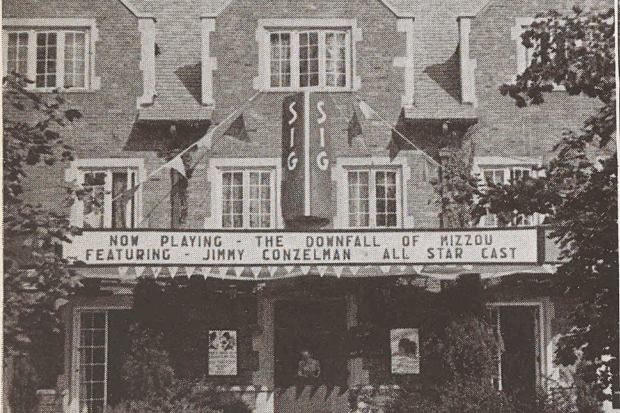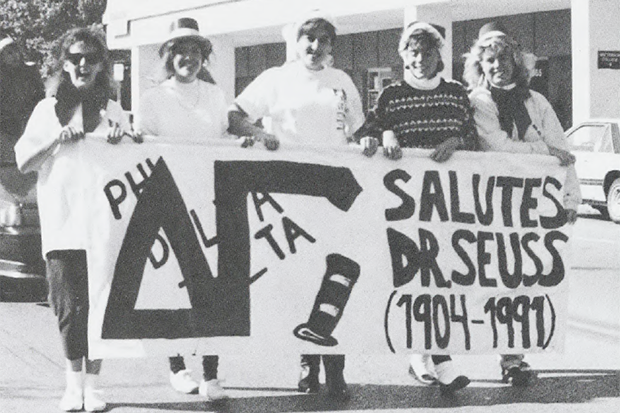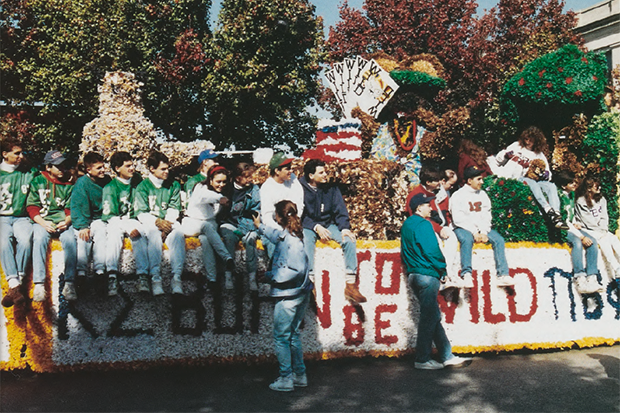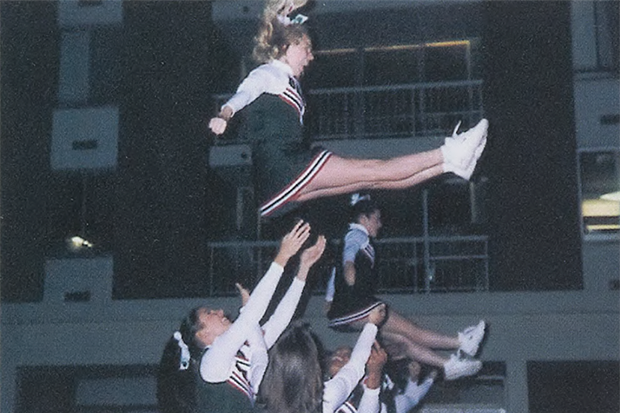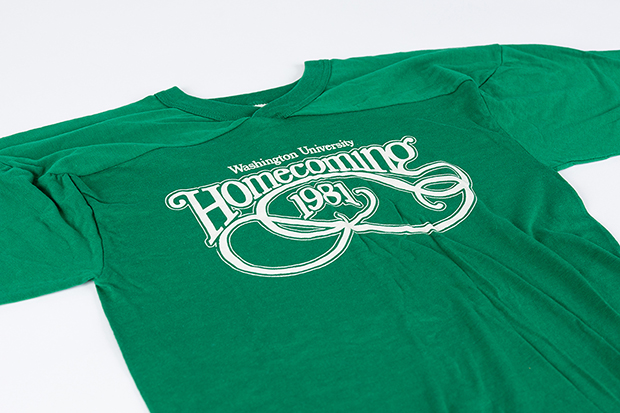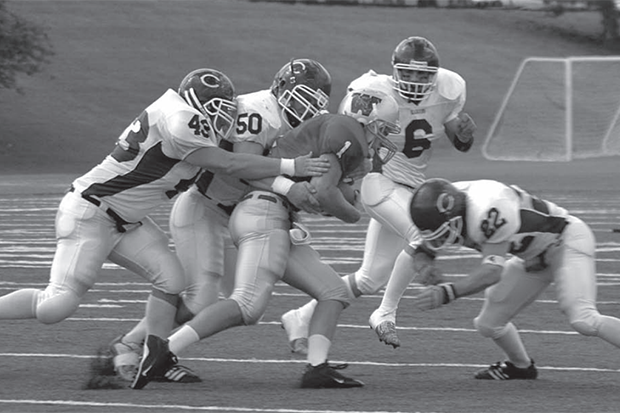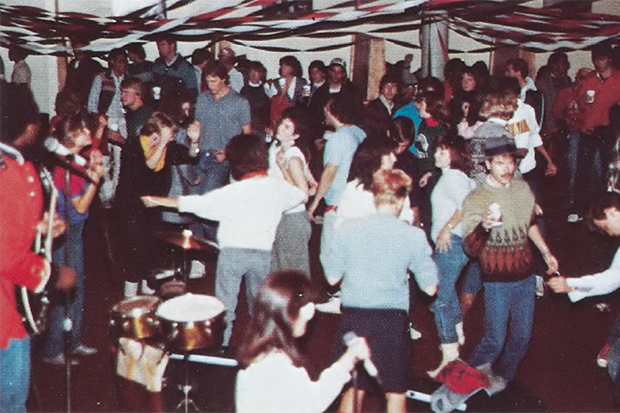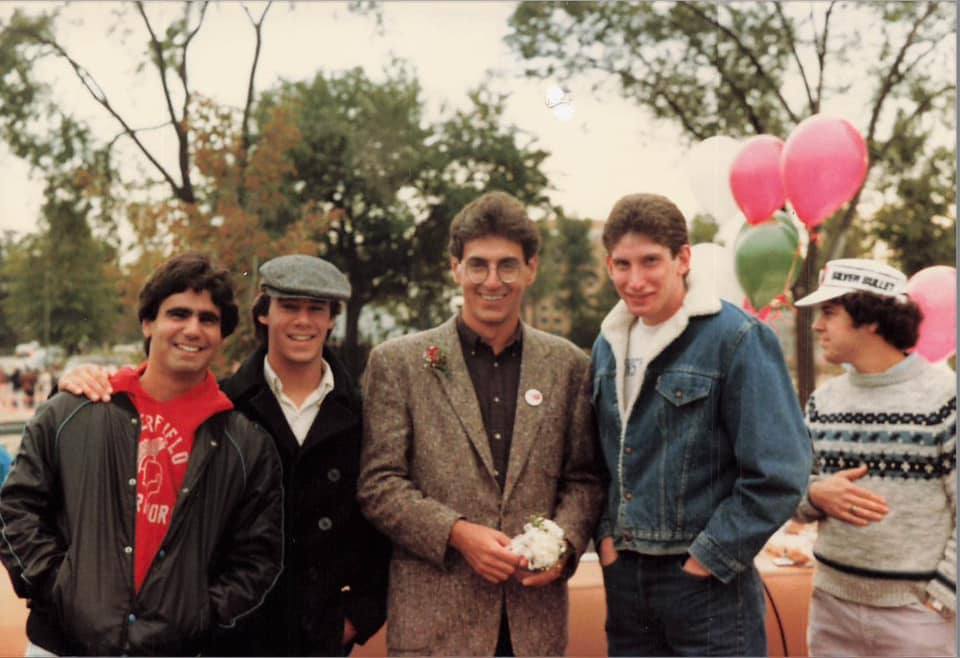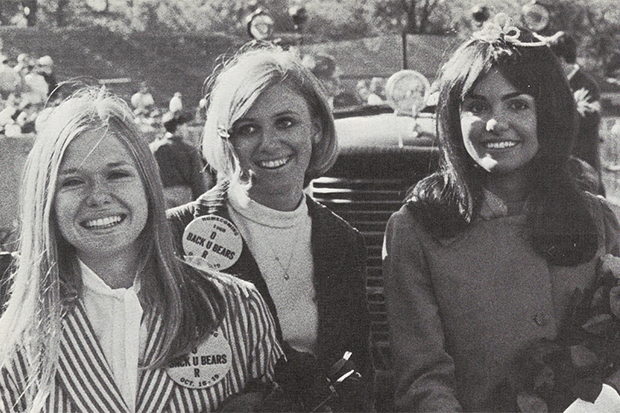By Matt Hampton
Just as the leaves change when the crisp October wind blows in, so too has Homecoming at WashU changed through generations of students, alumni, parents, and friends.
Early traditions
In the early 20th century, Homecoming featured both familiar and unusual festivities.
Some events that alumni from later decades may recognize: Students from the 1910s to 1930s decked the campus in red and green flair, socialized at a dance and open houses, paraded through city streets (both on foot and in automobiles), and got excited for the big football game at a bonfire and pep rally.
Other early Homecoming traditions were more peculiar — for example, the freshman-sophomore class fight. The officially sanctioned portion of this event was a series of athletic contests between the two classes. A 1922 article in the Student Life newspaper documents events on Francis Field that included:
- a shoe scuffle (“in which representatives from both sides placed their shoes in the center of the field and then rushed in to see which group could obtain its footgear first”)
- an obstacle race
- a tilting contest
- wheelbarrow polo
- tug-of-war
- a “chariot race between a decrepit delivery wagon and a two-wheeled cart, both pulled by the charging masses”

Unofficially, the underclassmen also engaged in spontaneous physical scuffles leading up to Homecoming, sources from the time report.
Midcentury celebrations

Unusual Homecoming practices from a later decade included a fraternity yell contest and an ugly man contest, in which students costumed themselves to be as ugly as possible, the 1960 Hatchet yearbook reports.
The competition for Homecoming queen was also popular midcentury. Sororities even bought ads in Student Life to encourage students to vote for their members.
Often, the current year’s queen would be crowned at a ceremony that her maids, the retiring queen, and the chancellor attended.
Golden age
For reasons that are not documented, Homecoming faded from the campus scene in the 1970s. However, Chancellor William H. Danforth revived the tradition in 1978, according to Beginning a Great Work: Washington University in St. Louis 1853-2003.
Homecoming thrived at WashU through the 1980s and into the ’90s. One tradition that was popular throughout Homecoming’s history was the awarding of prizes for parade floats and fraternity house decorations.
Students spent long hours crafting statues dozens of feet tall, often with comedic designs that cheered on the Bears or mocked their opponents in the Homecoming game. Greek life, in general, was a larger part of WashU’s culture than it is today, and fraternities and sororities had a significant presence in the parade.
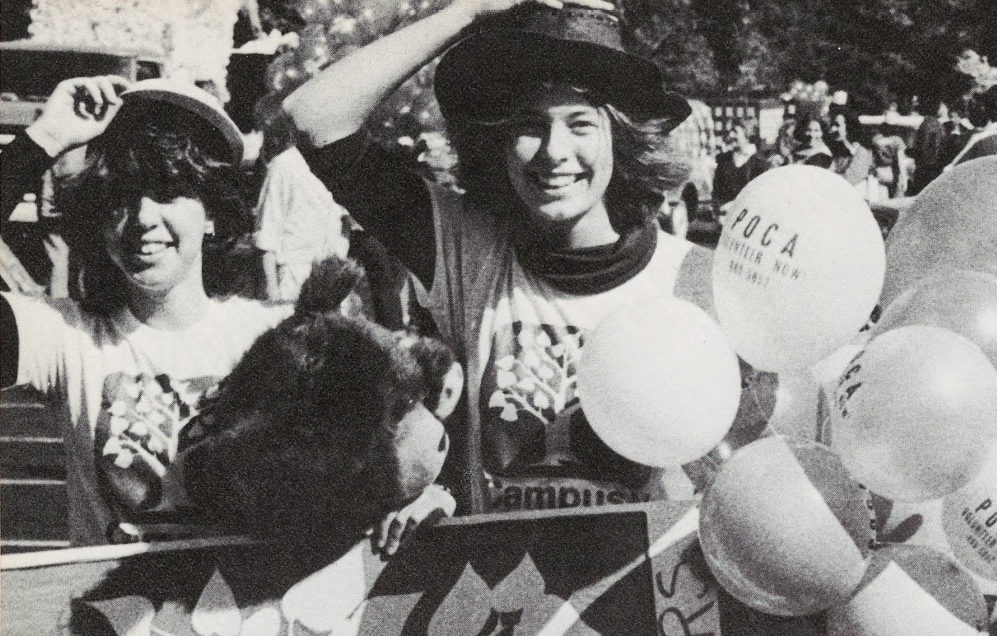
“My freshman year, fall of 1989, we had a Homecoming parade before the game,” says Lisa Wolf Perlmutter, AB ’93, BSOT ’97. “My sorority, Pi Phi, worked with Kappa Sigma fraternity to create a giant float, and then we marched in the Homecoming parade. It was in October of my first year there, and it made for such great memories and new friendships right as school started.”
Recent History
In the past few decades, Homecoming’s prominence diminished at WashU, with more focus going to other festivities, such as Parent and Family Weekend and Thurtene Carnival.
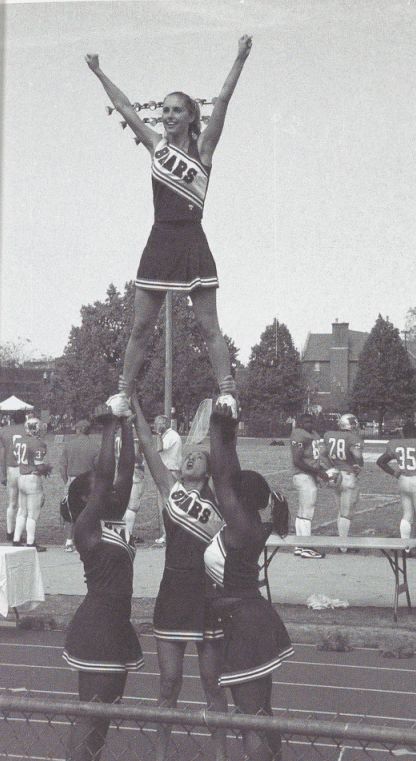
However, in 2005, Student Union (SU), the undergraduate student government, organized a spirit week to encourage WashU pride ahead of the Homecoming game.
“There was always such a sense of pride that you were at WashU, but that pride was not as focused on athletic events as it may have been at a different school,” says Pamela Bookbinder Clarke, AB ’06, then SU vice president, who now sits on the Alumni Board of Governors and serves as national chair of the Alumni and Parents Admission Program. “People celebrated the classes they took and the professors they worked with and the friends that they made, and the idea behind Spirit Week was to give people an opportunity to show that school spirit.”
Spirit Week activities included a comedy show, tailgate party, giveaways, and spontaneous photo opportunities with the WashU Bear mascot.
“We created shirts that got us some pushback,” Bookbinder Clarke humorously recollects. “On the back, they said ‘It’s in St. Louis, damn it.’ I guess that was slightly risqué at the time. But they were our biggest sellers. I can’t even remember how many times we had to reorder them.”
For unknown reasons, there have been no documented Homecoming events since that year, but, as WashU continues to evolve, so too do its traditions, leaving open the possibility of future Homecoming reincarnations.

